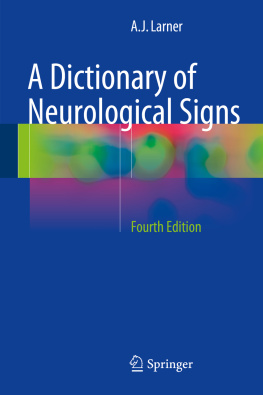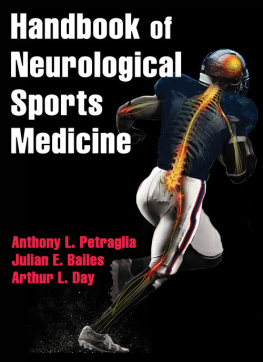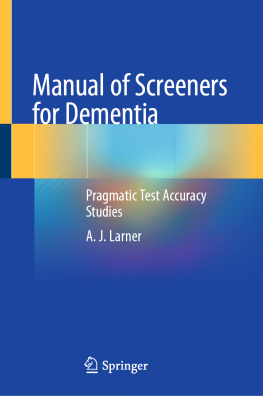Abadies Sign
Abadies sign is the absence or diminution of subjective pain sensation when exerting deep pressure on the Achilles tendon by squeezing. This is a frequent finding in the tabes dorsalis variant of neurosyphilis, i.e . with dorsal column disease, but now is more usually encountered in the context of diabetes mellitus as a consequence of intratendinous changes which might predispose to tendon rupture. The sign has also been reported in adrenomyeloneuropathy.
References
Abate M, Schiavone C, Salini V, Andia I. Revisiting physical examination: Abadies sign and Achilles intratendinous changes in subjects with diabetes. Med Princ Pract . 2014; : 1868.
Ohtomo R, Matsukawa T, Tsuji S, Iwata A. Abadies sign in adrenomyeloneuropathy. J Neurol Sci . 2014; : 2456.
Cross Reference
Argyll Robertson pupil
Abdominal Paradox
- see PARADOXICAL BREATHING
Abdominal Reflexes
Both superficial and deep abdominal reflexes are described, of which the superficial (cutaneous) reflexes are the more commonly tested in clinical practice. A wooden stick or pin is used to scratch the abdominal wall, from the flank to the midline, parallel to the line of the dermatomal strips, in upper (supraumbilical), middle (umbilical), and lower (infraumbilical) areas. The manoeuvre is best performed at the end of expiration when the abdominal muscles are relaxed, since the reflexes may be lost with muscle tensing; to avoid this, patients should lie supine with their arms by their sides. Superficial abdominal reflexes are lost in a number of circumstances:
Normal ageing.
Obesity.
Following abdominal surgery.
Following multiple pregnancies.
In acute abdominal disorders (Rosenbachs sign).
However, absence of all superficial abdominal reflexes may be of localising value for corticospinal pathway damage (upper motor neurone lesions) above T6. Lesions at or below T10 lead to selective loss of the lower reflexes with the upper and middle reflexes intact, in which case Beevors sign may also be present. All abdominal reflexes are preserved with lesions below T12.
Abdominal reflexes are said to be lost early in multiple sclerosis, but late in motor neurone disease, an observation of possible clinical use, particularly when differentiating the progressive lateral sclerosis variant of motor neurone disease from multiple sclerosis. However, no prospective study of abdominal reflexes in multiple sclerosis has been reported.
Reference
Dick JPR. The deep tendon and the abdominal reflexes. J Neurol Neurosurg Psychiatry . 2003; : 1503.
Cross References
Beevors sign; Upper motor neurone (UMN) syndrome
Abducens (VI) Nerve Palsy
Abducens, abducent, or sixth, cranial nerve palsy causes a selective weakness of the lateral rectus muscle resulting in impaired abduction of the affected eye, manifest clinically as diplopia on lateral gaze, or on shifting gaze from a near to a distant object.
Abducens nerve palsy may occur anywhere along its nuclear, fascicular, subarachnoid, petrous apex, cavernous sinus, and orbital course. It may be an isolated finding or be associated with accompanying neurological features which may assist with topographical diagnosis, for example with ipsilateral postganglionic Horner syndrome (posterior cavernous sinus: Parkinson syndrome) or twelfth nerve palsy (clivus).
Many causes of abducens nerve palsy have been described, but the most common include:
Microinfarction in the nerve, due to hypertension, diabetes mellitus.
Raised intracranial pressure: a false-localising sign, possibly caused by stretching of the nerve in its long intracranial course over the ridge of the petrous temporal bone.
Nuclear pontine lesions: congenital, e.g . Duane retraction syndrome, Mbius syndrome.
Mass lesions anywhere along the course.
Bilateral abducens palsy is more often seen with tumours, subarachnoid haemorrhage, meningitis, Wernickes encephalopathy, and raised intracranial pressure.
Isolated weakness of the lateral rectus muscle causing impaired abduction may also occur in myasthenia gravis. In order not to overlook this fact, and miss a potentially treatable condition, it is probably better to label isolated abduction failure of the eye initially as lateral rectus palsy, rather than abducens nerve palsy, until the aetiological diagnosis is established.
Excessive or sustained convergence associated with a midbrain lesion (at the diencephalic-mesencephalic junction) may also result in slow or restricted abduction, so called pseudo-abducens palsy or midbrain pseudo-sixth.
Reference
Leigh RJ, Zee DS. The neurology of eye movements. 4th ed. Oxford: Oxford University Press; 2006. p. 41623.
Cross References
Diplopia; False-localising signs
Abductor Sign
The abductor sign is tested by asking the patient to abduct each leg whilst the examiner opposes movement with hands placed on the lateral surfaces of the patients legs: the leg contralateral to the abducted leg shows opposite actions dependent upon whether paresis is organic or non-organic. Abduction of a paretic leg is associated with the sound leg remaining fixed in organic paresis, but in non-organic paresis there is hyperadduction. Hence the abductor sign is suggested to be useful to detect non-organic paresis.
Reference
Sonoo M. Abductor sign: a reliable new sign to detect unilateral non-organic paresis of the lower limb. J Neurol Neurosurg Psychiatry . 2004; : 1215.
Cross Reference
Functional weakness and sensory disturbance
Absence
An absence, or absence attack, is a brief interruption of awareness of epileptic origin. This may be a barely noticeable suspension of speech or attentiveness, without postictal confusion or any awareness that an attack has occurred, as in idiopathic generalized epilepsy of absence type (absence epilepsy; petit mal), a disorder exclusive to childhood and associated with 3 Hz spike and slow wave EEG abnormalities.
Absence epilepsy may be confused with a more obvious distancing, staring, trance-like state, or glazing over, unresponsive to question or command, possibly with associated automatisms such as lip smacking, due to a complex partial seizure of temporal lobe origin (atypical absence).
Ethosuximide and/or sodium valproate are the treatments of choice for idiopathic generalized absence epilepsy, whereas carbamazepine, sodium valproate, or lamotrigine are first-line agents for localisation-related complex partial seizures.
Cross References
Automatism; Seizures
Abulia
Abulia (or aboulia) is a syndrome of hypofunction, characterized by lack of initiative, spontaneity and drive (aspontaneity), apathy, slowness of thought (bradyphrenia), and blunting of emotional responses and response to external stimuli. It may be confused with the psychomotor retardation of depression and is sometimes labelled as pseudodepression. More plausibly, abulia has been thought of as a minor or partial form of akinetic mutism. A distinction may be drawn between abulia major (= akinetic mutism) and abulia minor, a lesser degree of abulia associated particularly with bilateral caudate nucleus stroke and thalamic infarcts in the territory of the polar artery and infratentorial stroke. There may also be some clinical overlap with catatonia and athymhormia.










